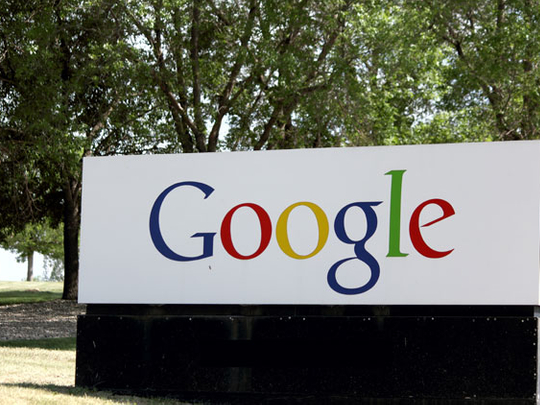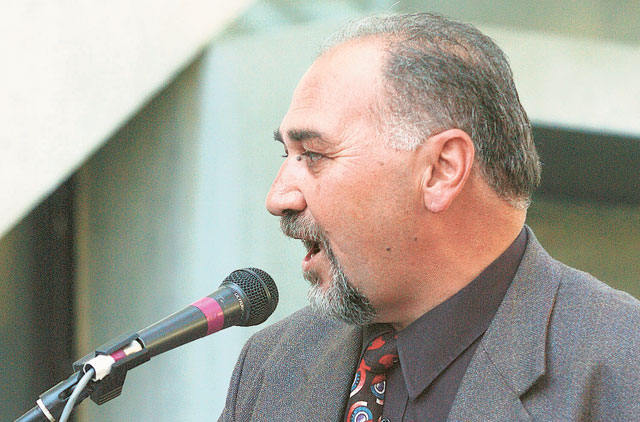
Not knowing a language is no longer an obstacle to surfing the internet for information or find answers. English is not a precondition for browsing anymore, as international companies vie to attract as many users as possible. Google is also in the race.
After Arabising some of its products and offering the necessary tools for users to create their own content in Arabic, such as pictures, posting videos and facilitating technology for bloggers, Google is paying more attention to users in the region. Their doodles, related to many prominent figures and celebrities in the region, are another way to bring people closer to the search engine.
Google's latest initiative involves translation, part of the company's growing interest in the promising markets of the region. According to Target Group Index (TGI) survey carried out by Pan Arab Research Center, as of 2011 in the Middle East, nearly 44 per cent of internet users use Google.
Egypt was one of the the fastest growing markets in the region, where Google users climbed from 57 per cent in 2010 to 64 per cent a year later. It's 62 per cent in UAE, 44 per cent in Saudi Arabia, 44 per cent per cent in Lebanon and 72 per cent in Jordan.
Penetration
As for internet penetration, UAE tops with 74 per cent, followed by Saudi Arabia with 56 per cent and it's 44 per cent and 30 per cent in Lebanon and Jordan respectively.
"It is to build bridges with translation associations in the Arab region and provide them with necessary tools and training," said Fayeq Oweis, manager of the Arabic localisation team Global.
"In return, they will translate articles and content for Google," he added.
The initiative will be implemented gradually, and Jordan was chosen as the first country, noted Oweis, who filled the position early last year and moved to Dubai last October to work from the region on enlarging the localisation plan, or the Arabisation plan.
Currently, Oweis has a team of 35 translators from various countries, mainly Egypt, Jordan and Lebanon, as well as seven reviewers tasked with reviewing the offered translations and provide a feedback.
The aim of the Arabisation plan is to produce a proper, simple and normal flow of Arabic language on the internet, so people don't feel that the article has been translated from another language, Oweis said.
Problems
The lack of sufficient Arabic content on the internet and the wide gap between native Arabic speakers and available content is one of the main problems faced by users in the region.
"Some figures show that the percentage of Arabic content on the internet is less than one per cent of the global available content, while the percentage of Arabic speakers is not less than seven per cent [of the world's population]," Oweis told Gulf News in an recent interview.
The population of 22 Arab countries is an estimated 350 million. Some studies show that nearly 88 million of them are internet users. However, there are no specific figures of how many people navigate the internet using English or Arabic, two of the official UN languages.
A study by the Centre for International Media Assistance (Cima) last month expects the number of Arabs accessing the internet to reach 100 million by 2015.
Yet some studies show that the percentage of people "using key words in Arabic has recorded a 75 per cent increase," noted Oweis without giving any specific figures.
The growing number of users motivates internet companies to pay more attention to the region, he noted.
"The more technology is used to solve problems faced by Arabic users online, the more the number of users will be," Oweis said.
As part of Arabisation, Google is further seeking to specify searches of places and maps to reflect more cultural and local angles. For instance, if you search for restaurants serving pizza in this region, the search engine will throw up places serving shawarma or falafel, while a similar search in New York will lead to only pizza and burger joints.
Partnerships
Google is also planning to seek partnerships with content providers such as universities, research centres, companies, associations and users themselves.
Signs of the growing number of users in Arabic has been recorded in other programmes. For example, Ahlan Online, a Google Arabic website launched in 2010, is dedicated to providing children in the Middle East and North Africa with the skills they need to navigate the internet using Google tools. It offers educational tips and guidance on basic online usage in Arabic.
Ahlan Online is getting a "huge number of visitors", said Oweis, without offering any numbers.
As part of Google's localisation plan, which include nearly 40 languages around the world, the "Google+" program, the social network provided by the company, was launched simultaneously in nearly 40 other languages late last year.
Today, Owais noted, the program has 90 million users. Interestingly, 65 per cent of them are outside the US.
Google, which has "a large budget" to cover its 40 languages plus English, targets producing 150 million words every year. It has 100 subcontractors for the 40 languages, and 1,000 translators indirectly employed by the company. Google+ is the only program that differentiates the user according to gender and uses the appropriate Arabic language to address masculine and feminine users.
The percentage of Arabic users now is believed to be high, as social networks (in Arabic) have been getting considerable attention, especially with the onset of the Arab Spring.













